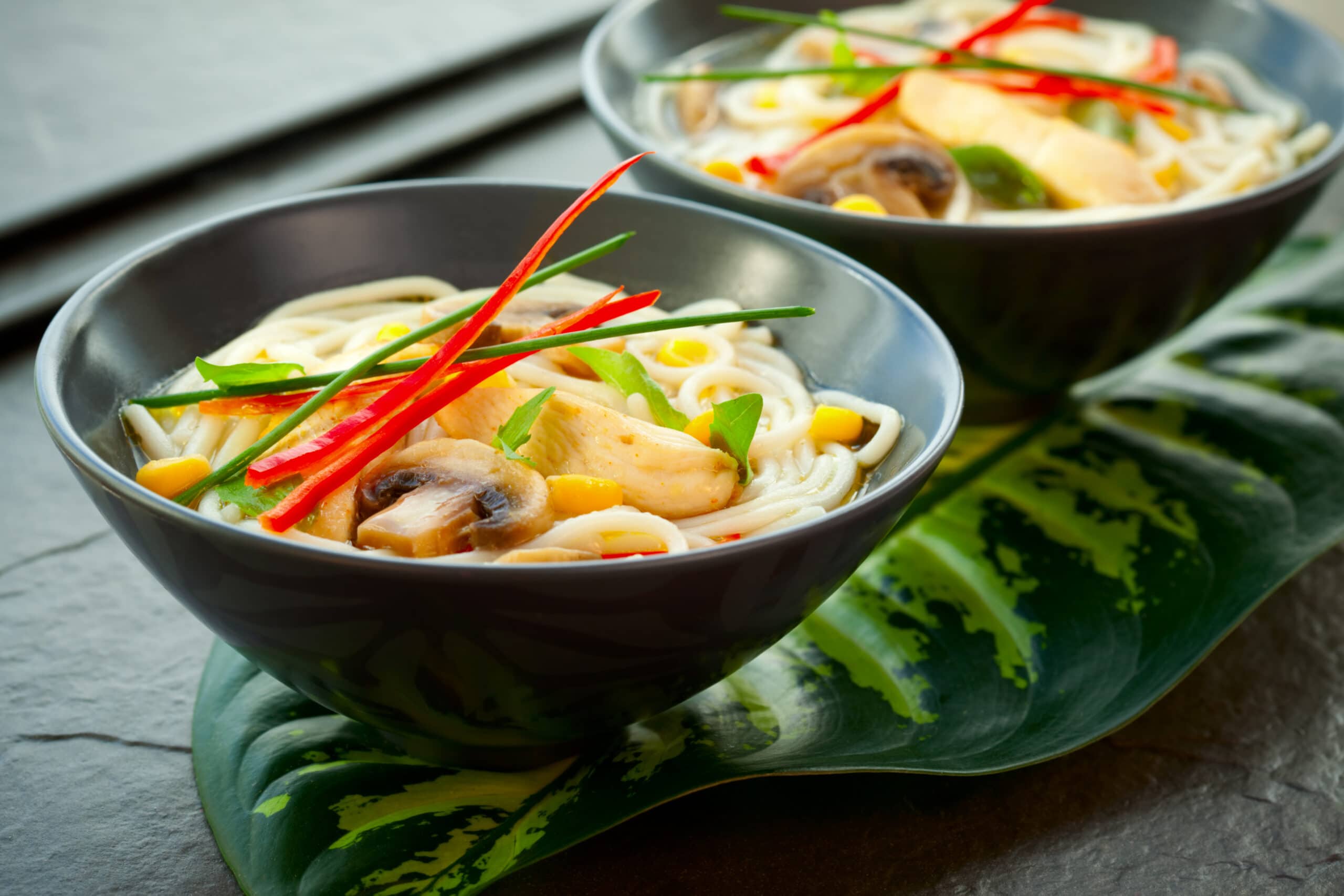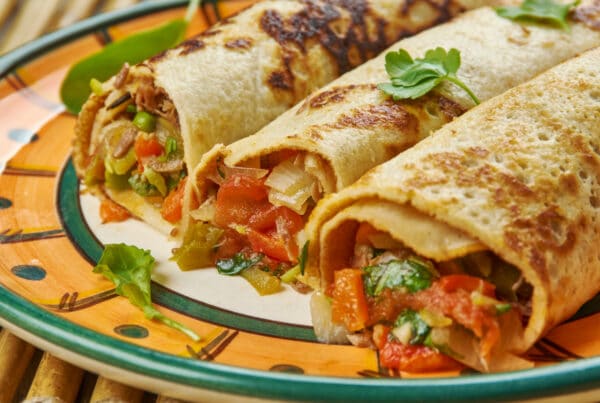Chinese Medicine Diet
“I eat a healthy diet”. As an acupuncturist, I hear this statement often in response to asking people about their food choices. But what is a healthy diet? You might be surprised at the answer when a healthy diet is viewed through the lens of energetic balance. For a Chinese medicine practitioner, a traditional ‘healthy’ diet differs from modern nutritional advice. The Chinese Medicine diet is based on energetic principles such as damp natured, cold natured, and hot natured foods. By knowing the energetic nature of a food, you have the power to create good digestion, more balance, and healthy function.
Acupuncture aims to restore balance to your body when imbalance has caused pain or disease. Practitioners can utilize acupuncture or herbs, but may also recommend practices such as tai chi or dietary therapy. While these methods can heal disease by fixing imbalances, the main key is not allowing your body to become imbalanced in the first place. As a patient, you hold this valuable key in your hand every day. It’s called ‘the fork’.
Our nutritional counseling posts cover some basic principles that will help most people eat to achieve balance. My intention is to help you choose more balancing foods based on common energetic principles so you can create a foundation for healthy living.
Dampness in the Diet
Eating for balance has been a way of life for the Chinese for thousands of years. The concept of balance is ingrained in their cultural choices of what to eat and when to eat it. The Chinese diet includes well known spices such as ginger and common foods such as pearled barley. Ingredients are chosen for their medicinal value, as well as for nutrition and taste. The Chinese have long known that ginger helps with digestion and barley helps to drain dampness. Choosing herbs and spices that encourage proper digestion is easy to understand. But the Chinese diet aims for another principle unfamiliar to most Westerners, and that is preventing and draining dampness.
Dampness is a by-product of eating foods that clog the free flow of energy inside your body. Popular foods such as cheese, yogurt, white flour, and sugar are all culprits that cause dampness to form. Dampness causes stagnation which creates blockages in the body, resulting in pain and disease. Signs of accumulated dampness include mucus in the nose or lungs, digestive problems such as loose stools and constipation, excess weight, and swollen joints. Some common Western diseases that are associated with dampness include chronic allergies and arthritis. Dampness is difficult to treat once it accumulates so we want to eat in a way that prevents dampness from forming in the first place.
How Is Dampness Formed?
It is helpful to examine how dampness is formed. Have you ever thought about how food is processed inside your body? For over 2,000 years, the Chinese have observed the digestive process and declared proper digestion the cornerstone of the Chinese Medicine system and the foundation of good health. The digestive system is where the accumulation of dampness begins.
When food enters your mouth, it travels through your stomach and intestines. Here, energy or life force is extracted from the food and the waste products are expelled at the other end. The food energy that was extracted becomes your essential life force, providing the fuel you need to live every day. Digestion should be an unnoticeable event. Your digestive system should be quiet and clean burning to extract the most nutrition and energy from your food. ‘Clean burning’ is likened to metabolism. If you properly metabolize the foods that you ingest, the food is efficiently used and there is no leftover residue after the waste is excreted. If the system becomes clogged, however, the energy does not get adequately separated from the foodstuffs and although you excrete wastes, there is leftover residue that sticks to various places within the body. This residue is considered ‘dampness’ and affects your body’s functions in various ways.
Accumulated dampness clogs organs such as the lungs, causing allergies or asthma. When it clogs the digestive tract, indigestion or bowel problems can develop. Damp can also be ‘hidden’ and block meridians (the channels we use in acupuncture treatment that carry life force) leading to pain and stiffness or even swollen joints. Over time, dampness can become warm and create the diseases of inflammation such as arthritis, high cholesterol, and diabetes. Understanding and addressing dampness is one of the keys to treating disease in Chinese Medicine. Because it is so difficult to remove once it has accumulated, you can see the importance of not letting this dampness develop in the first place.
How do we choose foods that prevent dampness, facilitate good digestion, and allow free flowing energy? Here’s where the wisdom of selecting foods based on their energetic properties comes in. This is simpler than you may imagine. Foods that can be found in any grocery store form the foundation of the healthy Chinese Medicine diet.
What Types of Food Can I Eat?
Think of the typical menu you’ve seen in Chinese restaurants. The meals are built around steamed rice, cooked vegetables, and small quantities of animal protein or beans. In quality Chinese restaurants, the amount of cooking oils used will be low. If you skip the deep-fried choices and those made with flour products (think dumplings and wheat noodles), you have the basic Chinese Medicine diet – a diet that helps to maintain balance in the body at any age.
Cooked Vegetables
Have you ever noticed the quantity of vegetables on a typical plate of Chinese food? You are usually served a heaping plate of lightly cooked vegetables when you order a dish that includes vegetables in a Chinese restaurant. Vegetables play a major role in draining dampness and are packed with life giving nutrition. A variety of colors and textures create a combination that is both pleasing to the eye and to the palate. Taste and texture play an important role in regulating appetite. A wide variety ensures satiety, so you feel full. Varied colors provide a broad array of nutrients and antioxidants to promote health and longevity. Your plate should begin with a large quantity of lightly cooked vegetables. A good guideline is to fill half your plate with vegetables. You will want to include lots of leafy greens as these are one of the most balancing and nutrient dense foods you can eat.
Non Gluten Starches
Rice is a balanced food which is easily digested. In my allergic patients, rice is a recommended carbohydrate to help them reduce symptoms while undergoing allergy treatments because it is so gentle to the digestive system. White or brown rice are interchangeable depending on which one digests most easily for you. White rice tends to be more cleansing while brown rice is considered more nourishing. Other wheat-free, non-glutinous grains include millet and quinoa. These are considered ‘clean burning’ foods in Chinese Medicine, that gently drain dampness from the body. Rice, quinoa, or millet should fill one quarter of your plate or less.
Protein
Small quantities of animal protein or beans are included in the Chinese diet. The animal proteins are ‘building’ foods and can be difficult to digest hence the emphasis on ‘small’. A serving size of animal protein is typically 2-4 ounces 3-4 times per week. Beans can be eaten more often as they absorb dampness and provide fiber and protein. Your protein choice should fill the other quarter of your plate.
Limit Cold Raw Food
One food you will find very little of on the Chinese Medicine diet is raw, cold food. This includes salads and chilled food, iced drinks, and frozen foods. Cold, raw foods are culprits in the formation of damp because they are difficult to process. For your digestive system to extract the essence of food, it must ensure the food is warmed up to body temperature before it can begin breaking it down. Heating the food inside your body strains your energetic resources, weakening your energy system over time. Lightly cooked vegetables and well-cooked grains allow your digestive system to immediately begin extracting energy without first having to heat the food to body temperature. Even though raw foods such as those found in salads contain slightly more enzymes and nutrients, the net gain is less than that of cooked vegetables as you lose energy to the internal heating process while trying to assimilate these foods.
Eliminate Dairy
Notice that there is no cheese, butter, or milk on the Chinese menu. One of the reasons is the tendency of these foods to create dampness. Even if heated, dairy’s energetic nature is cold and hinders digestion. Chinese Medicine considers dairy to be a building food, only suitable for undernourished people. This makes dairy very stagnating if you are already well fed.
In a culture concerned about calcium, we have been led to believe that dairy is the only source of this bone building mineral. However, foods such as almonds, salmon, leafy greens, and broccoli are high in calcium and other minerals that are equally important in the formation of strong bones. Your calcium needs will be easily met by eating several servings of vegetables per day and adding foods like salmon and almonds to your diet each week.
Eliminate Sugar
Concentrated sweets such as soda, candy, sweetened yogurt, and energy bars, quickly create damp. The flavor of ‘sweet’ is considered nourishing in Chinese dietary therapy but the ‘sweet flavor’ applies to foods like rice, beef, and vegetables, not concentrated sugars. If vegetables are considered sweet, you can imagine the intense sweetness of a piece of chocolate cake. The sweet flavor of rice, meat, and vegetables benefits the digestive organs. Concentrated sweets such as sugar, impair the body’s ability to transform food into energy and to transport the wastes for elimination. Incompletely transformed food becomes dampness, accumulating over time to produce blockage and disease.
The 5 Flavors are sweet, sour, pungent, bitter, and salty. Balancing these flavors in accordance with your individual body type, disease pattern, and season are all part of Chinese dietary therapy. This is a complex subject that can be explored in the book The Tao of Healthy Eating: Dietary Wisdom According to Traditional Chinese Medicine by Bob Flaws
Eat According to the Seasons
Different seasons of the year require modified cooking methods and different food choices. People naturally eat more warming, heavier foods in the winter, like soups, stews, and baked foods. Conversely, in summer we are drawn to lighter, cooler types of foods that are more quickly cooked, like steamed vegetables. Varying your food choices according to seasons is a way to keep your body in sync with the natural environment. Eating warmer foods when the weather is cold and cooler foods during the summer months keeps you healthy in all seasons.
Likewise, eating in accordance with what grows in your region will keep your body in balance. For instance, someone who lives near the equator where the weather is warm all year around would eat different foods than people who live in cold, northern climates. People in tropical regions would naturally be near tropical fruits since they grow in that type of climate. Those living in the north, say high in the mountains, would never naturally see a tropical fruit growing in their area so should probably avoid them.
One of my favorite herbal educators, Bob Flaws, says that the modern diet is a ‘recent aberration in the history of the human diet’ that has only developed over the last 50 years. Many modern food choices would not exist in the absence of fast global transportation and indoor refrigeration. If you think about it, humans evolved eating what was locally available and in season. Preservation methods evolved but these methods usually involved cooking. The modern grocery store is like having an in season garden all year. Foods like watermelons, pineapples, and grapes are always available at your local grocery. But these are foods you might never find growing where you live and consuming them freely will lead to imbalances over time.
Eating local foods in season is still a common practice in many parts of the world. Indigenous cultures that produce many centenarians (people living past 100 years) have been studied for their dietary practices to find the key to their health and longevity. Scientists have tried to isolate which specific foods these people are eating to find the secret to their long, healthy lives. Many of these studies, however, seem to overlook the obvious fact that Indigenous people aren’t eating foods grown outside their region. Additionally, when you view the diets in longevity studies through the lens of Chinese Medicine dietary therapy, there are many similarities between their food choices. Especially noticeable are the larger proportion of locally grown vegetables, rice, whole grains, an absence of sugar or processed food, and smaller quantities of protein than their Western counterparts.
Now that we have covered some basics regarding the Chinese medicine diet and the concept of dampness, you can begin to make choices that will provide you with more years to your life and more life to your years.
If you’re feeling inspired and want to eat according to the natural principles of balance discussed here, please read Chinese Medicine Foods to Eat and Chinese Medicine Sample Meals. Make the switch to a harmonious way of eating and living.




I think westerners need to keep an open mind about any form of ancient/chinese medicine. They (we) seem to forget that we didn’t know what antibiotics was 200 years ago. There are more types of energy to be discovered who knows maybe in another 200 years we’ll discover something equally as exciting!
i am a chinese guy living in singapore. having a degree in engineering, being educated & having a decent job, imagine the sort of look i get on those occasional times when i told my western associates (colleague, boss, friends) to reduce/stop their dairy intake. They look at me like i am nuts, a total idiot. how can anyone cut out the most important source of calcium & be healthy? yet, over the years, these are the same group of people developing artrithis, diabetes, gout, bone protrusions, etc, despite going to the gym daily. ah, the epitome of modern life. It’s such a pity that TCM knowledge is so little known in the public, would have definitely benefited many.
I have recently experienced the incredible power of acupuncture, and the incredible doctor told me he could cure my allergies, as well as help my arthritis. If this will take it away, I am all over it. He told me to cut out dairy. I am going to have a go. Hard for me… living in Switzerland! But I am going to try it. Thanks for your post.
Thanks for reading our Nutritional Counseling page Stephanie. Glad to help!
I am from Europe and has been diagnosed with lactose intolerance when I was 17 years old. Now, I am 54, living in Australia and big fan of CTM. My lactose intolerance is the best thing that ever happen to me as I am fit and healthy like 30 years old. I attribute all to not eating dairy, not loving meat and giving up on gluten 20 years ago.
I used traditional Chinese medicine in the USA when doctors pretended not to know how to treat Lyme disease which is extremely high in the USA they want to make it impossible for antibiotics and to get well so, alternatives are /were sought out my doctor left the USA during COVID and no replacement in Flint mi waiting for one for sure that is knowledgeable not all are good
This is very helpful- Thank you.
Are you saying rice should be present in every single meal? Even if it’s just 1/4 of one’s plate, it seems a bit too often, doesn’t it? I am intrigued.
When and what is a good time, or meal (or even meal combination) to eat tubers?
Thanks for your comment. Tubers can be eaten any time in any combination as a healthy source of nutrients. As for rice at every meal, one should follow carbohydrate recommendations specific to their physical condition or physical requirements. Examples might include an active person consuming rice or non glutinous grains at each meal vs. someone with diabetes who should choose brown over white rice or other whole grains and consume less to keep blood sugar levels in the normal range. I hope that helps!
I recently heard that all rice has a toxin chemical , that I never hear of before thinking rice was healthy to eat. They substituted with cauliflower rice? Is cauliflower a heather choice, also is there another substitute like Cues Cues ,or quaios? Sorry not sure of names. Also if there is allot of inflammation that is like infection from injury instead of steroids I would think this wet diet could help is there something more intense to draw this out of the body in healthy way? Thank you, I printed out the wet diet . Very interesting :) Bonnie
Hi Bonnie. Rice has been shown to contain toxins and should be rinsed first. Cauliflower is certainly a safe alternative. Quinoa is a healthy substitute as well as Millet. I’m not sure what your question is about infection. The diet is a basic diet suited for most people but specific conditions would require a person who specializes in dietary therapy. Hope that helps!
How about mixing rice with beans or eating rice alone and later topping the meal with a cup of soybean tea?
Thanks.
Richard Umah
Hello,
Can you give me guidance about cooking methods and their qualities, and how they relate to the seasons…
When would it be better to fry than boil? To stir-fry than roast? To steam than braise?
In the west, we consume a lot more meats. But what meats are best matched up to which season?
Thank You
I cannot give detailed guidance on your questions but can answer a few. Baking is best in colder months, stir fry in warmer months. Chicken and lamb are on the warmer end of the scale so should be consumed in winter, fish is cold so summer is best. Hope that helps.
Hi Margaret, does air-conditioning affect the summer diet? In tropical Singapore, many find themselves going from aircon bed to aircon car/bus/train to aircon office. Then there are bouts out for lunch in some heat and sun. And perhaps some outdoor time on the weekends.
That’s a very good question! And I’m not sure of the answer. It seems logical that you would eat according to the temperature you are inhabiting. Perhaps listen to your body, if it feels cold and you are wanting to warm up, chicken vegetable soup might be good.
I like the philosophy of Chinese Medicine food. Found this site as I believe I am suffering from dampness and this site came forth. I have a dreadful cough and horrid catarrh, following bronchitis 3 months ago and not getting any improvement. One thing I notice is that you recommend eating local produce yet eat rice each day with it. Rice is not a locally grown product to most people. Here in the ?West we normally eat potatoes with our main meal. Why is this not good please?
Thanks for the question Dianne. And I”m very sorry to hear you’re struggling with the after effects of bronchitis. Basically the article is saying try your best to eat local. Obviously not everything will be grown nearby. Rice is a non-damp food which is why it is recommended. Potatoes are night-shades which cause reactivity in some people. Hope that answers your question.
Hello. Very interesting reading – thank you. Can you use soy or Almond milk? What about decaf coffee?
Almond milk is a fine substitute but many people react to soy. Decaf coffee is fine as well. Thanks for your comment Kate!
Hello thank you for writing a great article. I have a solid 12cm cyst on my ovary and believe it’s due to my dairy intake my whole life. I’m 33 years old. Is surgery my only option?
Is milk kefir also unhealthy? I’ve been told dairy is bad but probiotics in kefir are good, what do you think?
Thanks for your question. Probiotics can be obtained in pill form or other cultured products such as Kim-chee without producing dampness, so those might be a good choice.
What about eating wheat?
…. sorry and other grains corn, buckwheat, quinoa etc can they be eaten.
Grains that are gluten free are best to start. If your symptoms clear up, try adding wheat and see if they flare up again. If so, avoid wheat! Hope that helps! Margaret
What do you think of potatoes as the main source of carbs? Some in the ‘paleo’ crowd do this, eschewing refined grains like rice.
If someone has no allergic reaction to potatoes, is a potato, other vegetables and meat diet likely to be harmful?
Hi Asvin. Potatoes are fine as are sweet potatoes and other starchy veggies. Hope that helps!
I found the comments very interesting and I like the idea of Chinese Medicine food. Is porridge with water and almond milk good? What is best to eat for breakfast? Thanks.
Porridge with almond milk sounds like a fine breakfast!
Be careful with oats as they can contribute to dampness in the body! Not an everyday meal for someone concerned about damp. Sincerely, an acupuncture and Chinese medicine student.
Hi, I have a problem with Fibroids, after two operations, i do not want to do it again and i am not winning in getting another baby. in the african culture we have meat 2 times a days. could meat be causing me this problems?
Hello and thank you for your question. An excess of meat can cause stagnation in the system. For Fibroids a light non-damp diet like the one on my website would be recommended. Hopefully that helps you achieve pregnancy.
For fibroids reduce all foods that have estrogen in. I had to eliminate eggs, chicken, and red meat. Do a search on foods that have estrogen in them or cause your estrogen levels to rise. I avoided surgery.